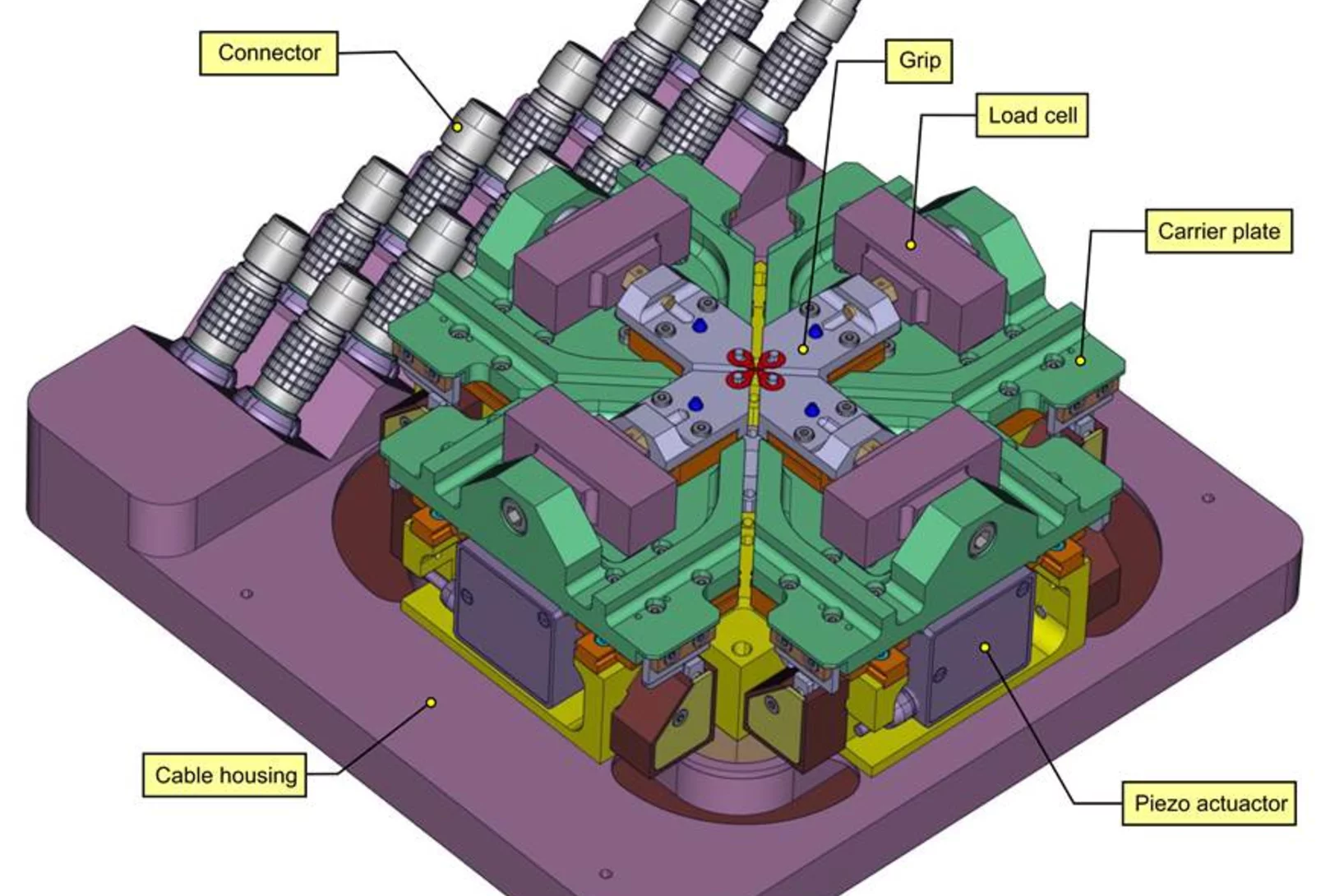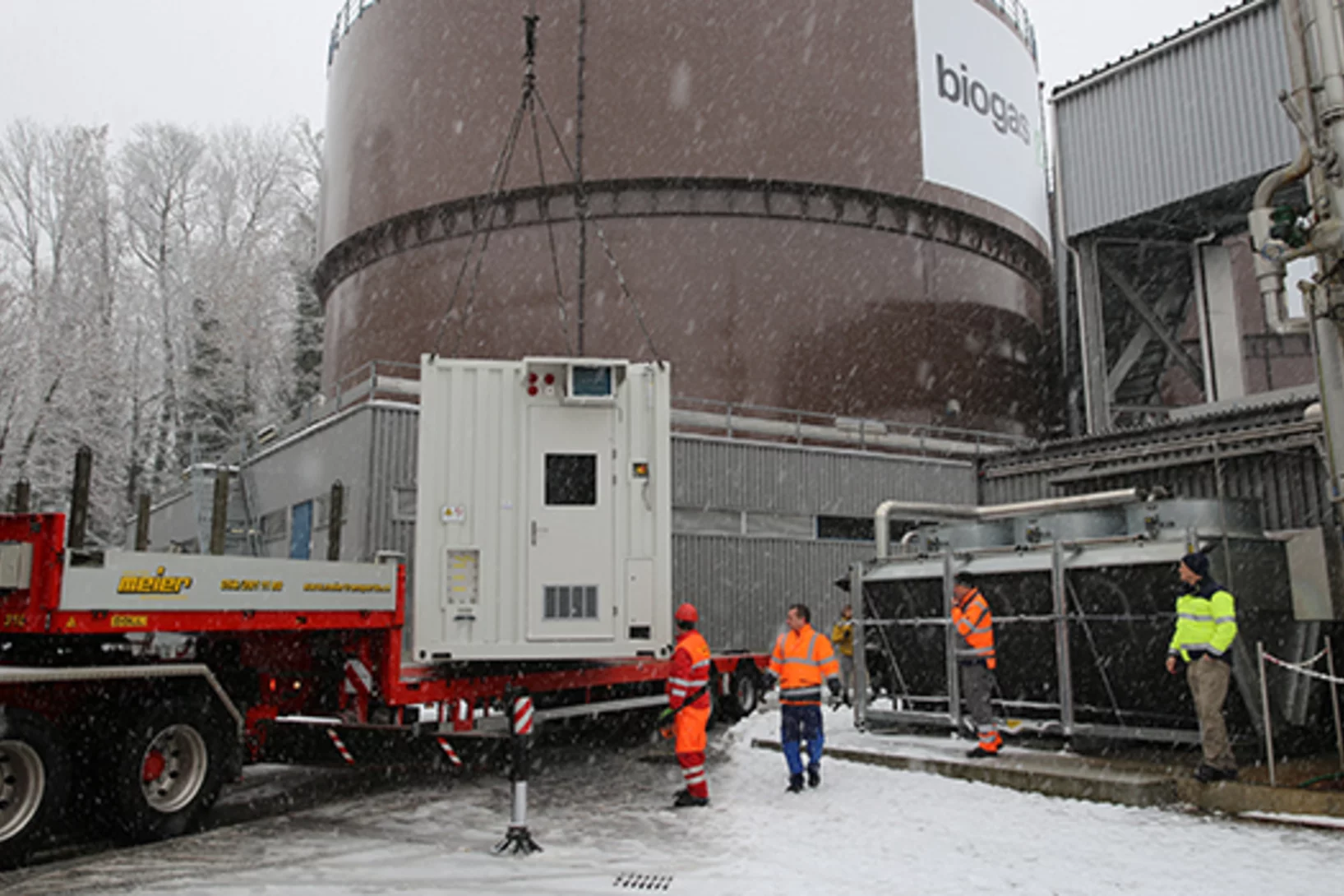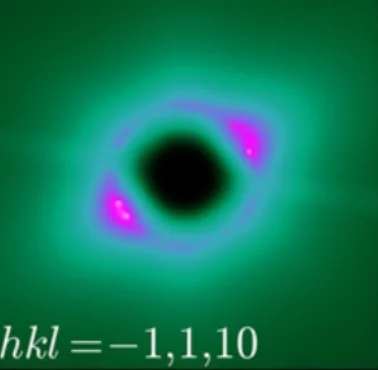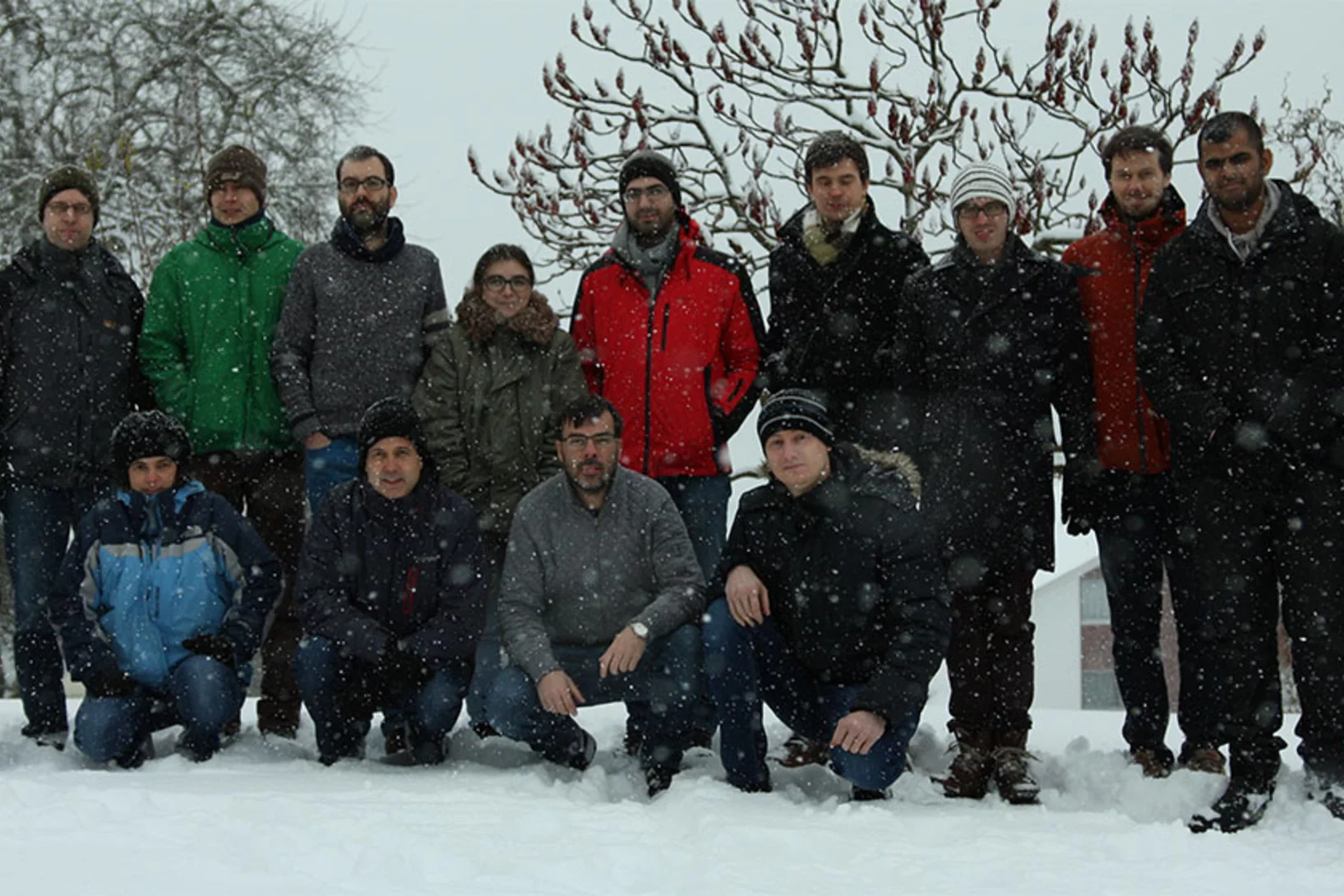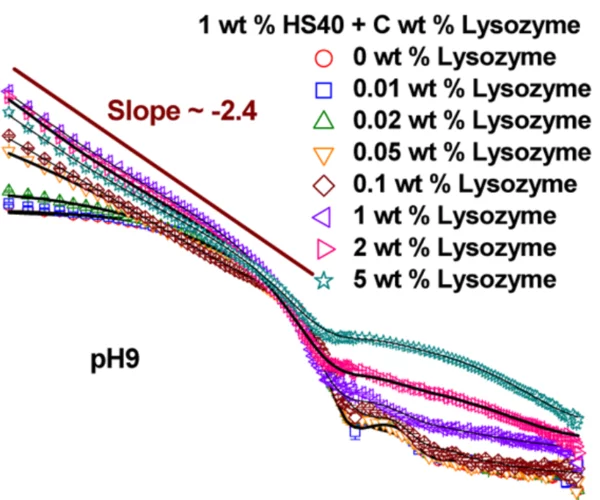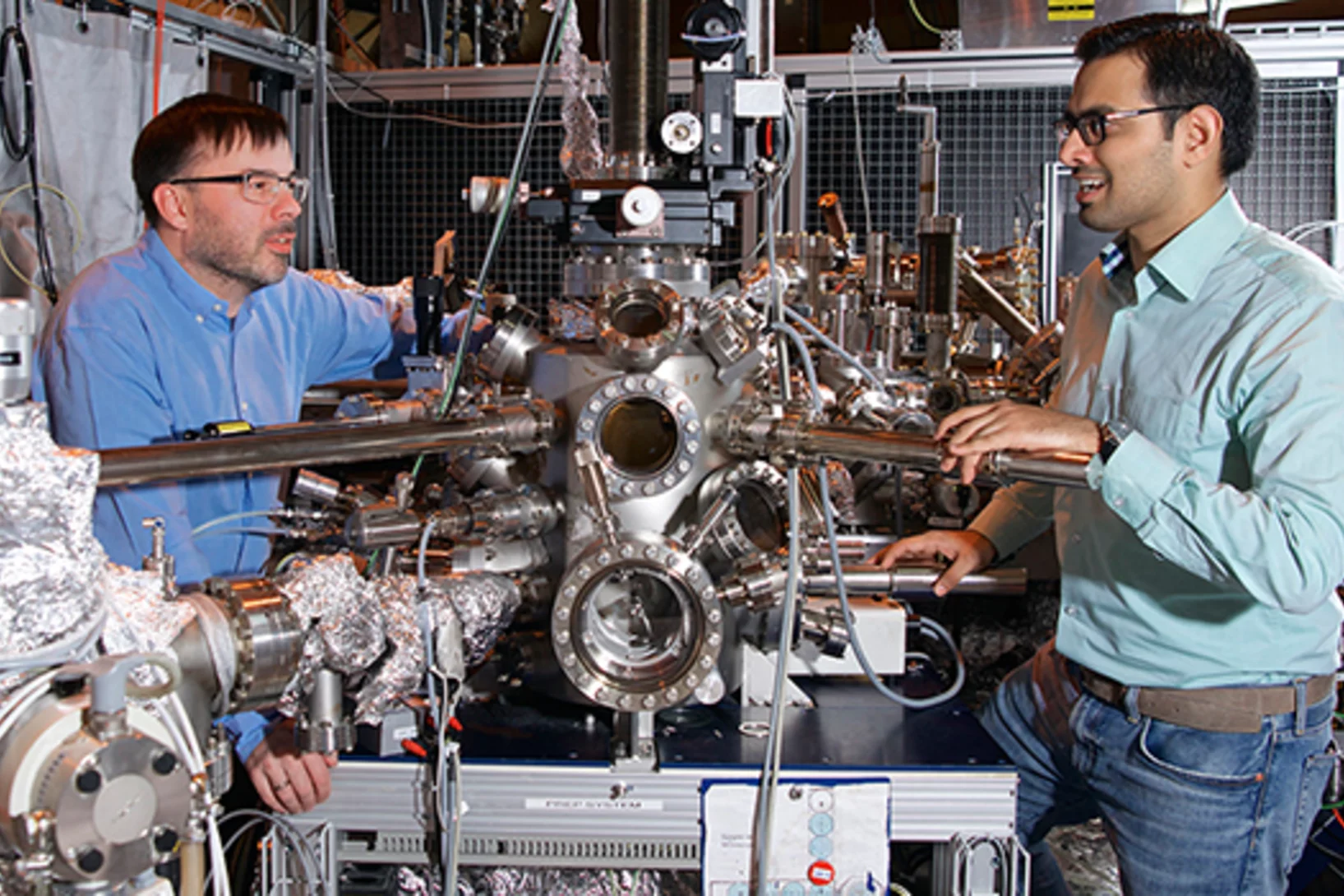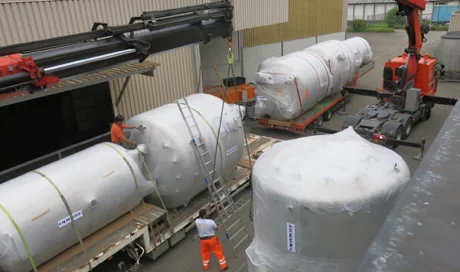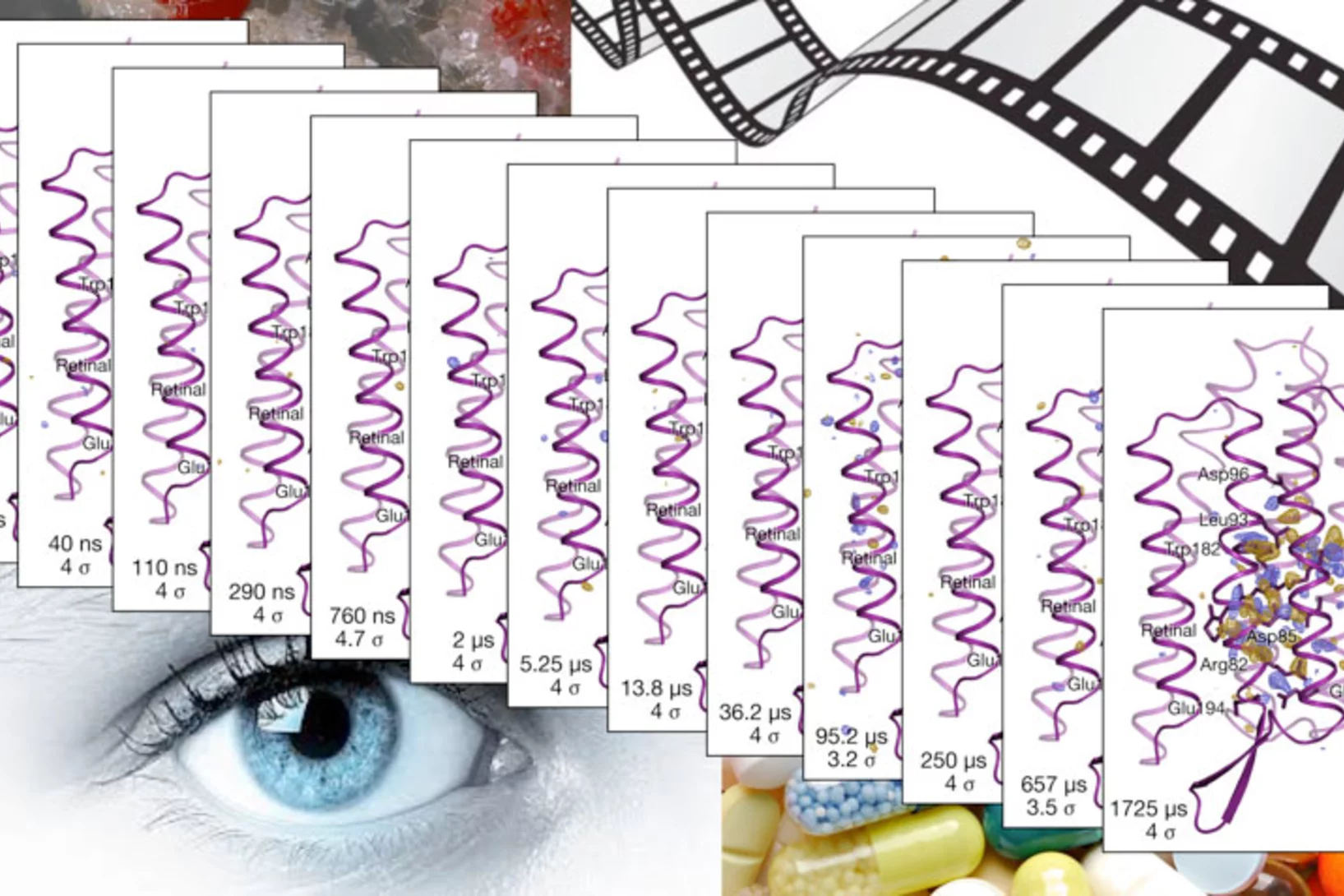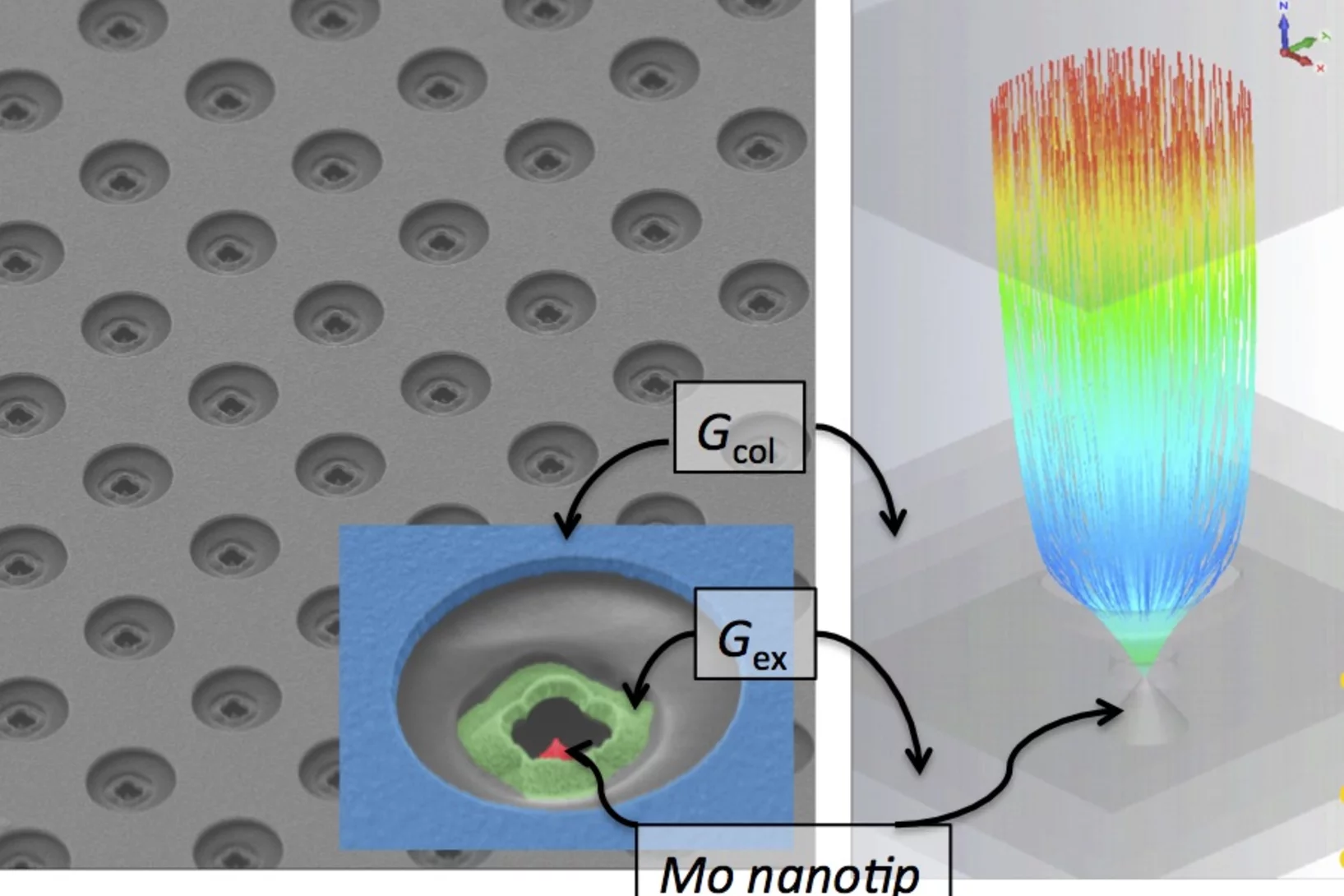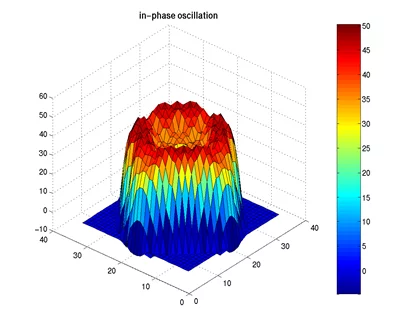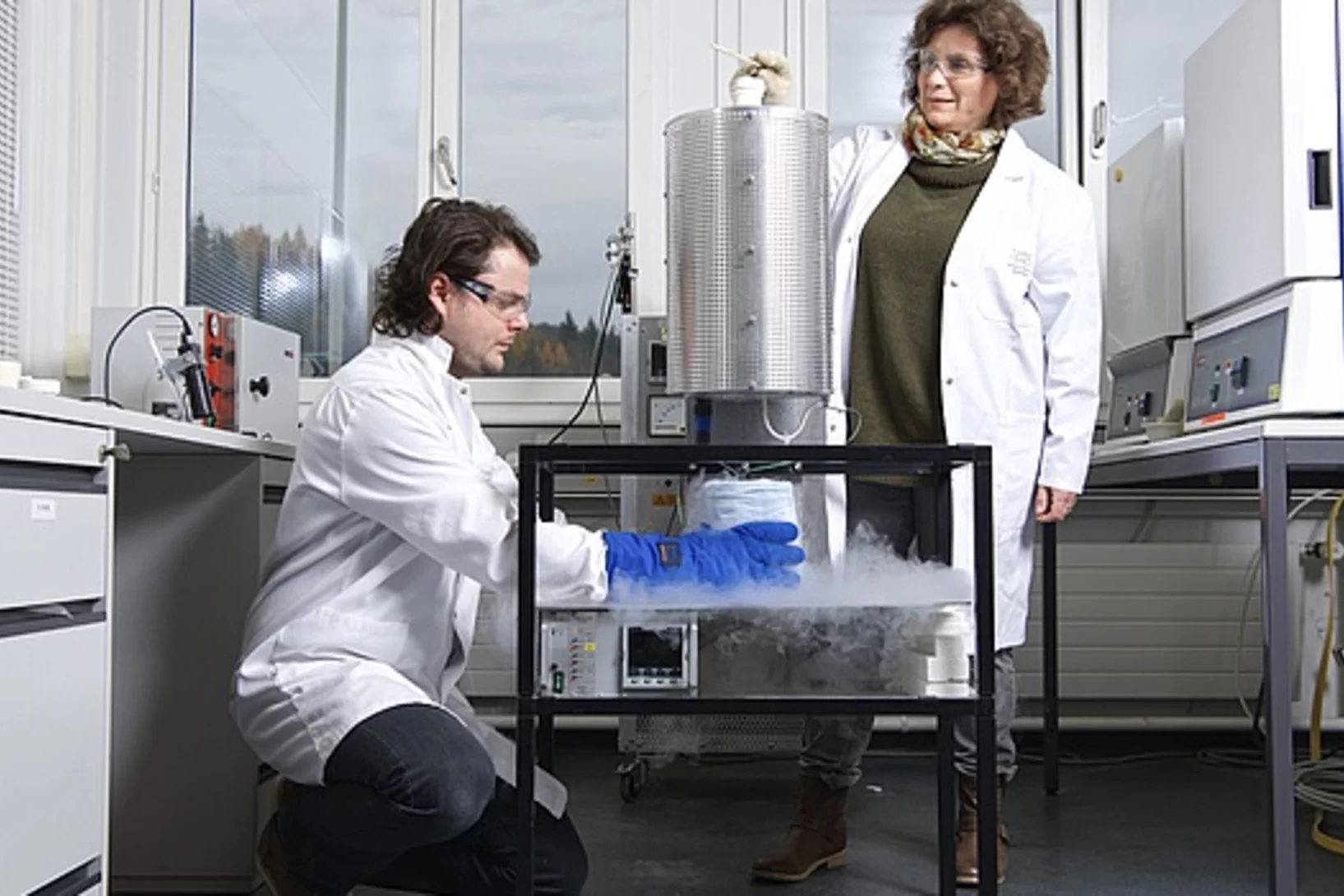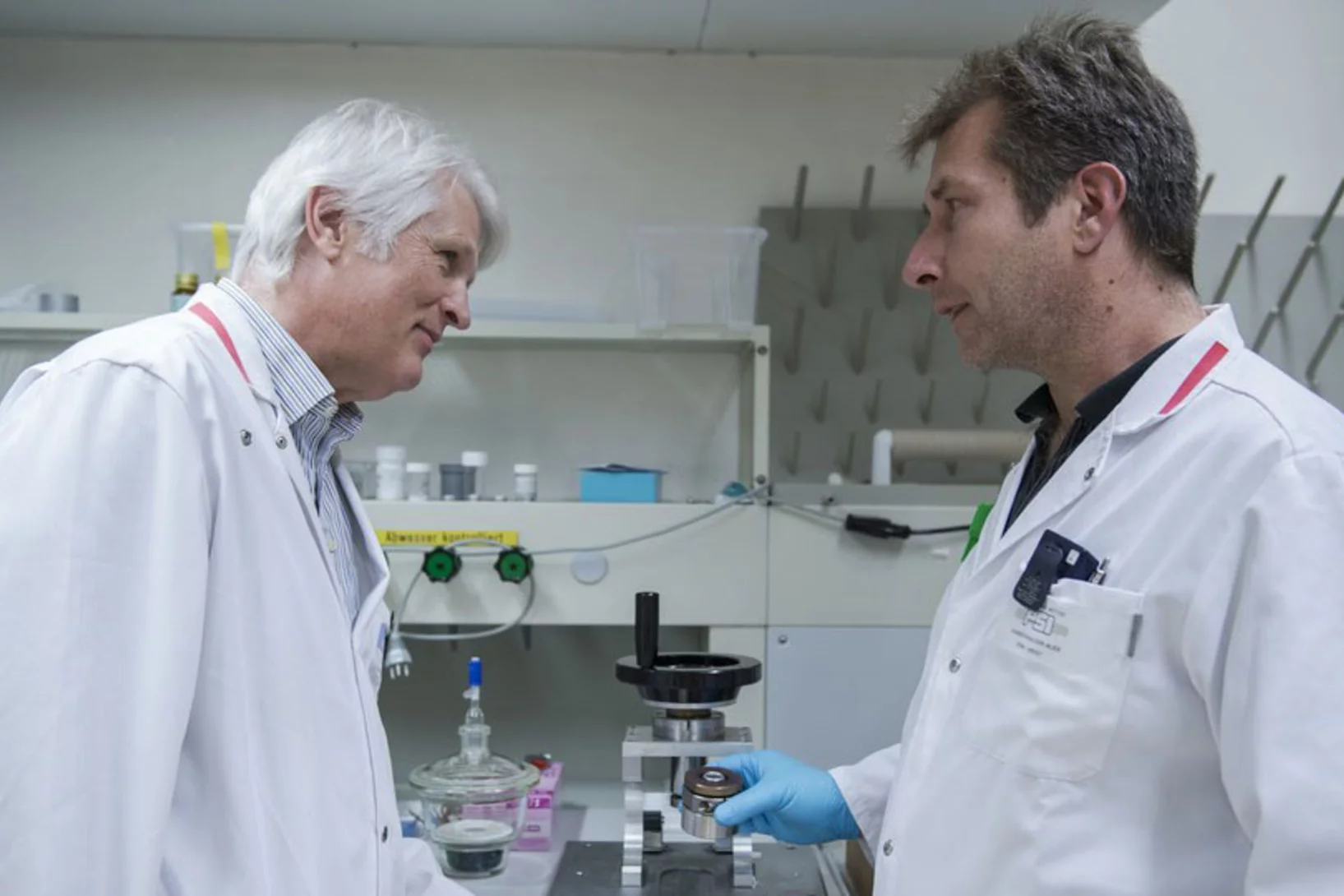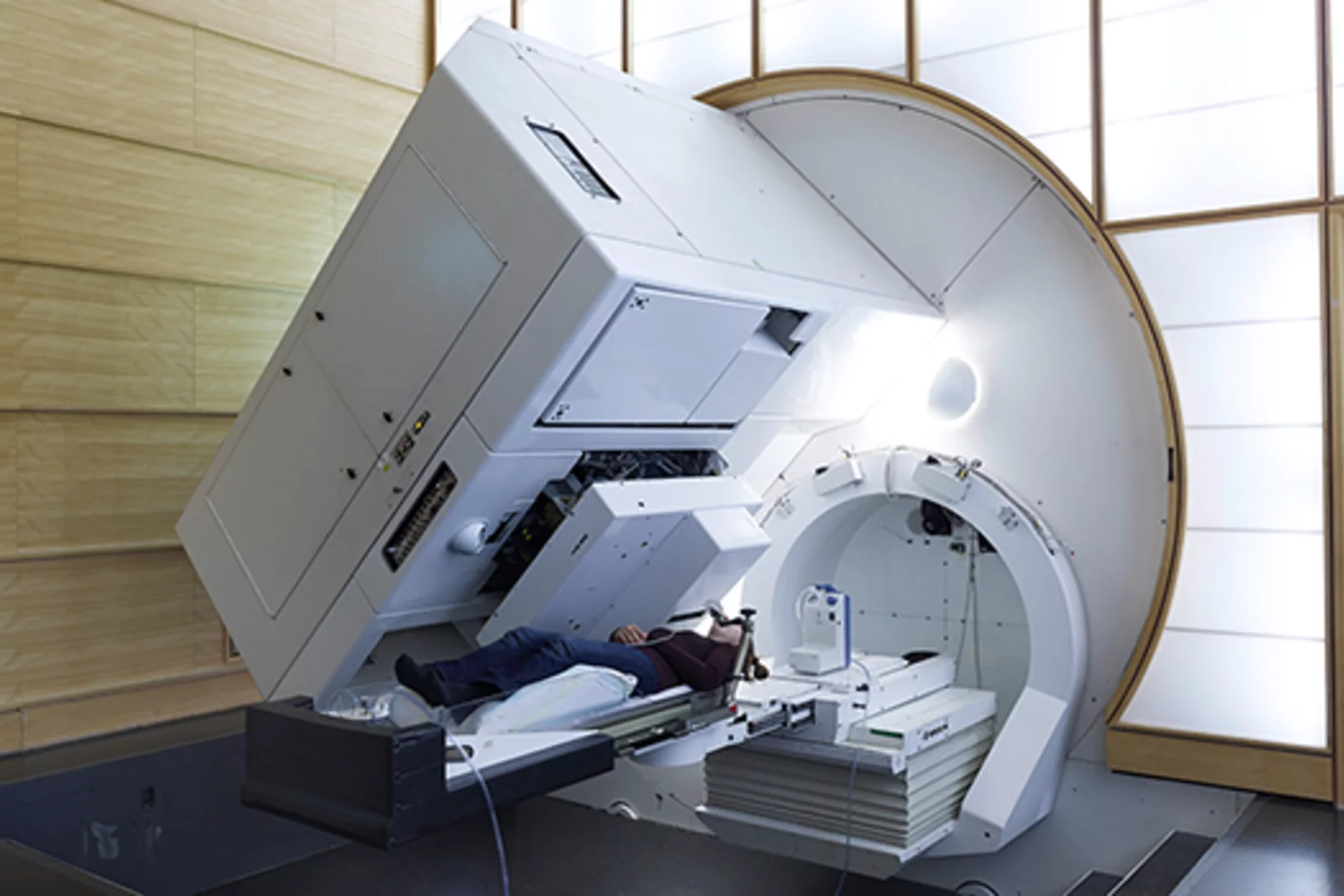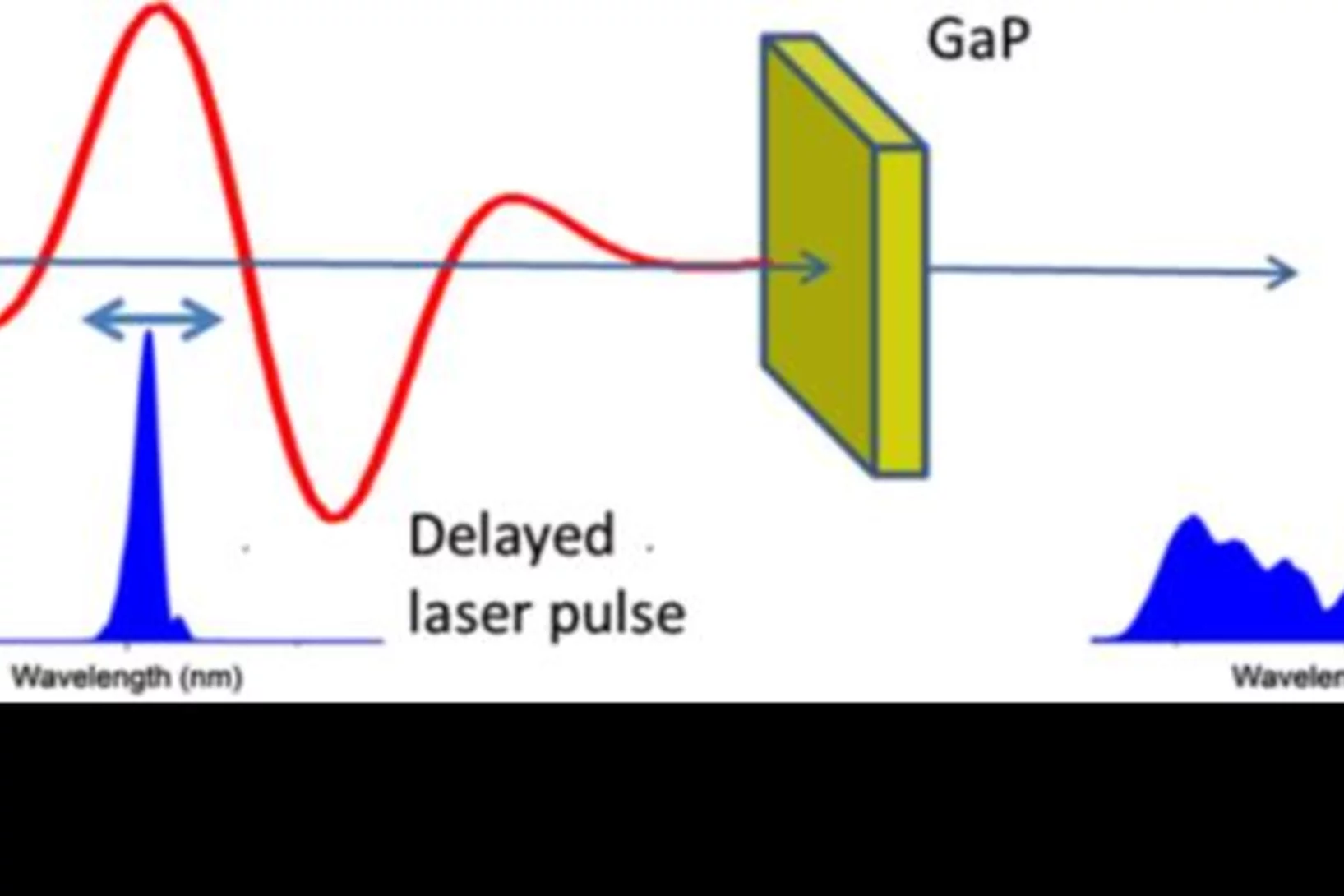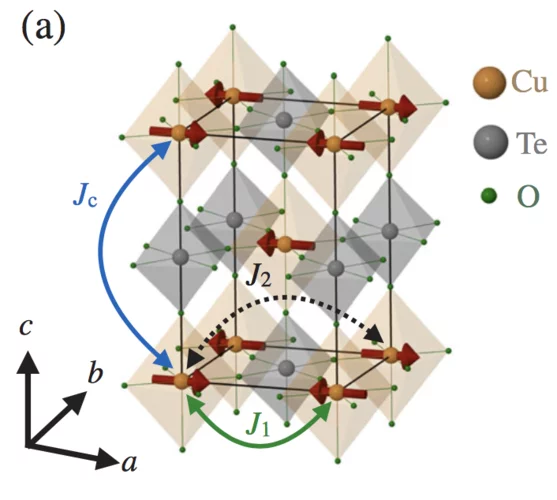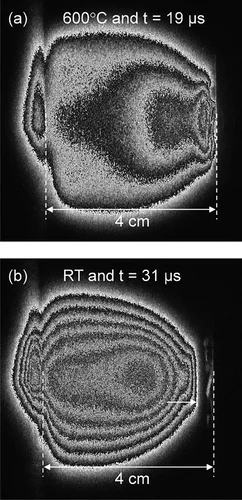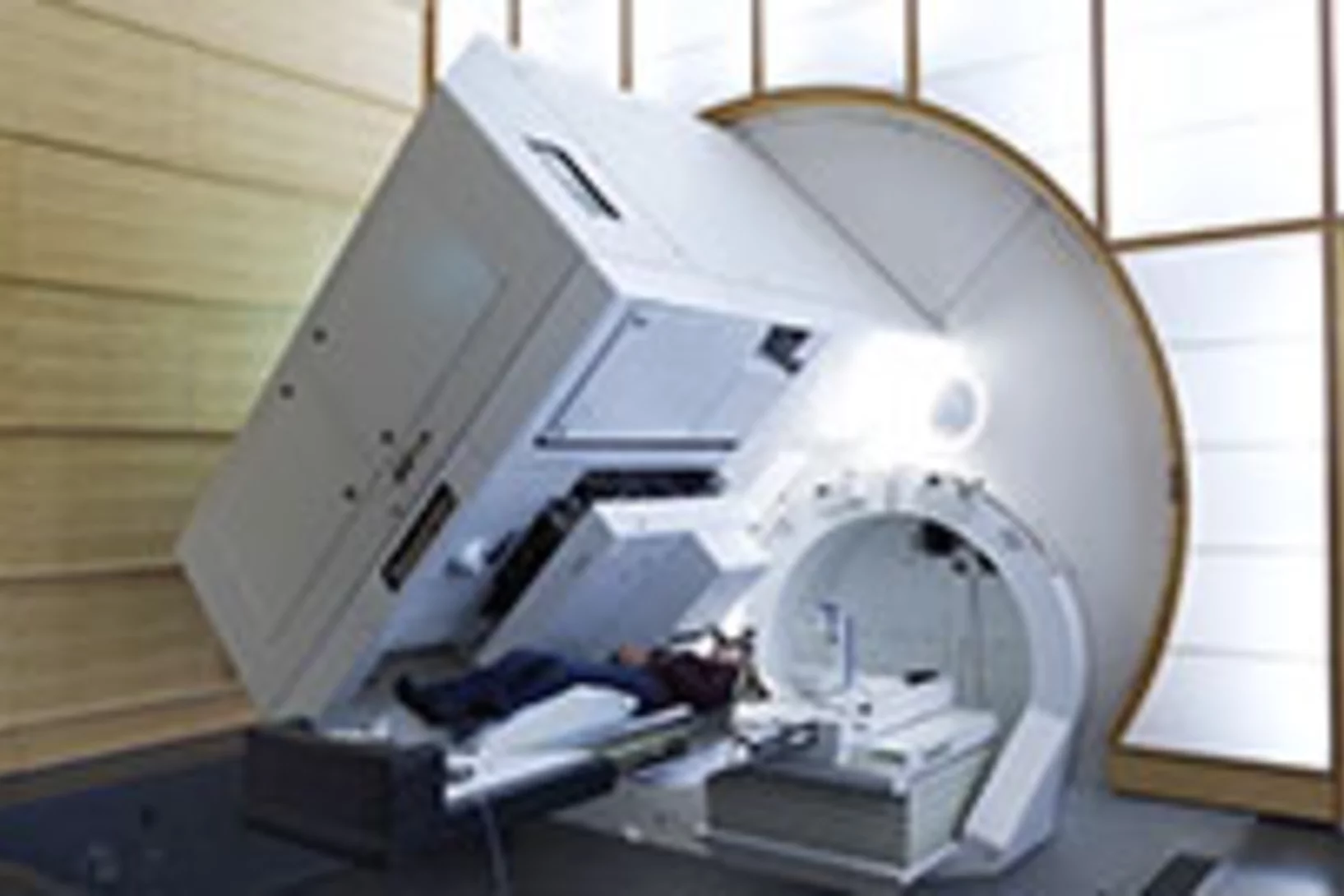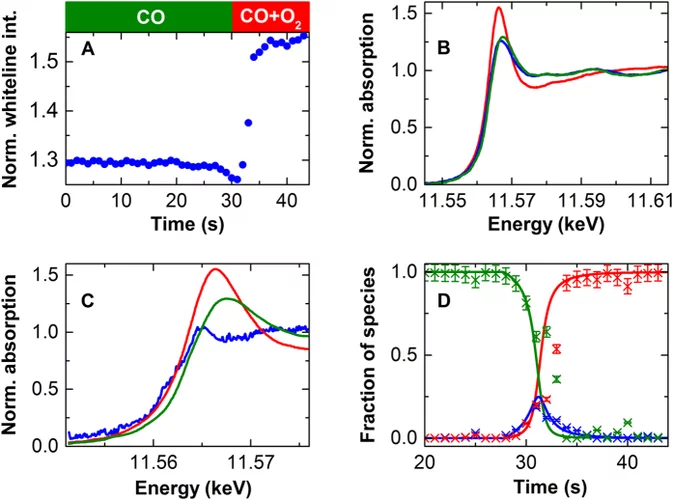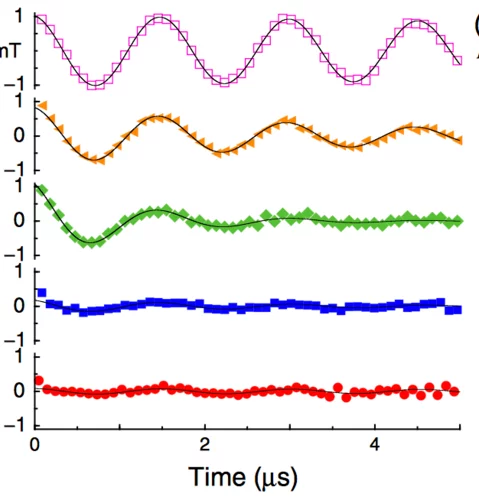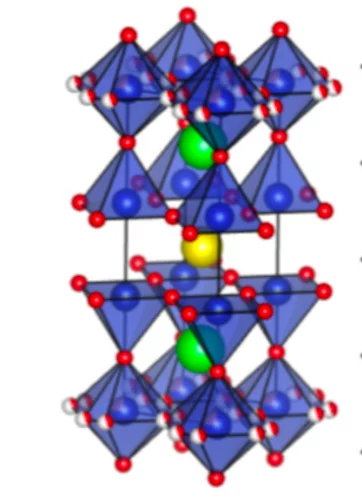A l’Institut Paul Scherrer, les scientifiques cherchent des réponses à la question essentielle des structures élémentaires de la matière et des principes fondamentaux de fonctionnement dans la nature. Ils étudient la structure et les propriétés des particules élémentaires – les plus petits composants de la matière – ou se penchent sur la question de savoir comment les molécules biologiques sont structurées et remplissent leur fonction. Les connaissances qu’ils acquièrent de la sorte ouvrent de nouvelles pistes de solution en sciences, en médecine ou dans le domaine des technologies.
Pour en savoir plus, reportez-vous à Aperçu Fondements de la nature
Thomas Lippert new Editor-in-Chief of Applied Physics A
Prof. Dr. Thomas Lippert has been appointed as new "Editor in Chief" of the journal Applied Physics A(link is external). He succeeds Michael Stuke who served Applied Physics A more than 20 years as an Editor in Chief.
Immersion en eaux froides
Martin Ostermaier, biochimiste, a voulu quitter la zone de confort de la recherche scientifique. Il a donc remisé ses pipettes et consacre désormais ses journées au droit des brevets et aux investisseurs.
A Miniaturized Biaxial Deformation Rig for in situ Mechanical Testing
Researchers at PSI have developed a new unique miniaturized biaxial deformation rig, which allows to apply in-plane biaxial stress states with arbitrary stress ratios and to perform strain path changes on thin-sheet metals. The device is optimized for in situ usage inside a scanning electron microscope and at synchrotron beam lines.
Augmenter le rendement en méthane à partir des déchets organiques
Les déchets organiques de Suisse recèlent un important potentiel énergétique. Car ils permettent de produire du méthane, un gaz précieux, principal composant du gaz naturel. Grâce à une technologie développée au PSI, il devrait être possible à l’avenir d’augmenter nettement le rendement en méthane à partir des déchets organiques. Un test de longue durée, mené conjointement avec le fournisseur d’énergie Energie 360° à la station d’épuration et de méthanisation de Werdhölzli (ZH), devrait à présent permettre de faire avancer la technologie sur la voie de l’application industrielle.
Full Elasticity Tensor from Thermal Diffuse Scattering
We present a method for the precise determination of the full elasticity tensor from a single crystal diffraction experiment using monochromatic X-rays. For the two benchmark systems calcite and magnesium oxide, we show that the measurement of thermal diffuse scattering in the proximity of Bragg reflections provides accurate values of the complete set of elastic constants.
Plus-value pour les malades du cancer
A l’Institut Paul Scherrer PSI, les malades du cancer reçoivent un traitement unique en Suisse: la protonthérapie. Il s’agit de la forme la plus moderne d’un type de radiothérapie anticancéreuse et, par rapport à l’irradiation conventionnelle, elle présente des avantages importants en termes d’efficacité et d’effets secondaires. Le Centre de protonthérapie au PSI est entièrement dédié à ce traitement spécial. Son travail pionnier a permis d’aider plusieurs milliers de patients, mais aussi de transformer radicalement la protonthérapie, et ce à l’échelle internationale.
Annual Retreat of the Microscopy & Magnetism Group
The Magnetism and Microscopy group has met for its annual retreat meeting in Lungern 11- 15.1.2017 (in the central mountain region of Switzerland) for extensive discussions on its science program. As for other years, after some general introductory lecture into the techniques used, current and future projects have been presented by the PhD students, postdocs, and scientists as well as from guests who collaborate with the group. Discussion went into the time where dinner has been prepared together, followed by some leisure activities on Saturday.
Suppression of magnetic excitations near the surface of the topological Kondo insulator SmB6
We present a detailed investigation of the temperature and depth dependence of the magnetic properties of the three-dimensional topological Kondo insulator SmB6, in particular, near its surface. We find that local magnetic field fluctuations detected in the bulk are suppressed rapidly with decreasing depths, disappearing almost completely at the surface.
Structure and Interaction in the pH-Dependent Phase Behavior of Nanoparticle−Protein Systems
The pH-dependent structure and interaction of anionic silica nanoparticles (diameter 18 nm) with two globular model proteins, lysozyme and bovine serum albumin (BSA), have been studied. Cationic lysozyme adsorbs strongly on the nanoparticles, and the adsorption follows exponential growth as a function of lysozyme concentration, where the saturation value increases as pH approaches the isoelectric point (IEP) of lysozyme.
De nouvelles approches des réactions chimiques grâce aux nanotechnologies
80 % des produits de l’industrie chimique sont fabriqués par recours à la catalyse. Ce procédé est également indispensable dans la conversion énergétique et l’épuration des gaz d’échappement. L’industrie teste donc continuellement de nouvelles substances et de nouvelles configurations susceptibles de déboucher sur de nouveaux procédés catalytiques plus performants. Des chercheurs de l’Institut Paul Scherrer PSI à Villigen et de l’ETH Zurich ont à présent développé une méthode qui permet d’améliorer nettement la précision de tels essais, ce qui devrait accélérer la recherche de solutions optimales.
New sewage cleaning system and tank farm
PSI Hotlab is collecting and radiologically cleaning the entire radioactive waste water from the PSI East side. In the years 2014-2016 a major refurbishment took place, where the old tank farm was decommissioned, and new stainless-steel tanks were installed together with new, modern ultrafiltration systems during normal operation of the lab.
A three-dimensional movie of structural changes in bacteriorhodopsin
Snapshots of bacteriorhodopsinBacteriorhodopsin is a membrane protein that harvests the energy content from light to transport protons out of the cell against a transmembrane potential. Nango et al. used timeresolved serial femtosecond crystallography at an x-ray free electron laser to provide 13 structural snapshots of the conformational changes that occur in the nanoseconds to milliseconds after photoactivation. These changes begin at the active site, propagate toward the extracellular side of the protein, and mediate internal protonation exchanges that achieve proton transport.
Can a metal nanotip array device be a low-emittance and coherent cathode?
A nanofabricated low emittance field emitter array cathode was demonstrated for the first time, and successfully applied to observe the low-energy electron diffraction from suspended monolayer graphene. The work has an impact on the future development of compact X-ray free electron lasers, THz/RF vacuum electronic sources, and ultrafast electron imaging and diffraction experiments.
The Dynamics of Nuclear Reactors
Nuclear reactor dynamics deals with the transient behaviour of nuclear reactors which mostly refers to time changes of the imbalance between heat production and removal. Since the prediction of the dynamic behaviour is crucial for the safety of a reactor, computational models and methodologies have been developed in the framework of the STARS project, at the Laboratory for Reactor Physics and Thermal-Hydraulics (LRT), with the main goal to simulate the complex behaviours of reactors under various conditions with a high level of fidelity.
Vers des mémoires informatiques économes en énergie
Un nouveau matériau pourrait servir de base aux futures mémoires informatiques, car il permettrait de réduire nettement les besoins en énergie dans le domaine du stockage de données par rapport aux disques durs actuels. Ce matériau fait partie de la classe dite des multiferroïques magnétoélectriques et conserve la propriété magnétique nécessaire même à température ambiante.
Tuning magnetic spirals beyond room temperature with chemical disorder
Frustrated magnets with spiral magnetic orders are of high current interest due to their potential for spintronics and low-power magnetoelectric devices. However, their low magnetic order temperatures (typically <100K) greatly restrict their fields of application. Researchers of PSI have demonstrated that the stability domain of the spiral phase in the perovskite YBaCuFeO5 can be enlarged by more than 150K through a controlled manipulation of the Fe/Cu chemical disorder.
La chercheuse d'air
Julia Schmale, spécialiste en sciences de l'atmosphère, embarquera à bord d'une expédition maritime qui fera le tour de l'Antarctique en trois mois. Elle y cherchera l'air le plus propre qu'abrite encore notre planète.
Dans la ligne de mire des protons
Au PSI, certains chercheurs travaillent jour après jour avec la radioactivité, afin de développer des méthodes de traitement avancées destinées aux patients. Dans des conditions de sécurité particulières, ils manipulent tout naturellement un matériau qui se désintègre. C’est une course contre la montre. Pour que tout fonctionne sans accroc, un groupe de travail spécial veille sur l’infrastructure.
De retour dans la vie
Derrière l'œil de Gabi Meier, les médecins avaient découvert une tumeur qui ceignait son nerf optique. Seul le PSI offrait encore une possibilité de la traiter tout en ménageant l'œil et les structures voisines. Quelques mois après la fin de la protonthérapie, j’ai remarqué que je voyais de plus en plus. Certes, c’était toujours vague, mais je voyais! C’était sensationnel, raconte-t-elle en entretien.
Le SwissFEL a été inauguré
Aujourd’hui, 5 décembre 2016, le PSI a solennellement inauguré son nouveau grand instrument de recherche, le SwissFEL, en présence du président de la Confédération Johann Schneider-Ammann.
SwissFEL First Lasing
On Friday December 2nd at 1am SwissFEL observed for the first time FEL lasing in the undulator line. The lasing was achieved with a commission beam of low intensity, repetition rate and energy, i.e. 100pC/bunch, 1Hz and 377MeV. The 12 undulators were set to a K value of 1.2. The resulting wavelength computed from beam energy and undulator K value is 24nm. The FEL signal was observed with a Si-diode detector. The spontaneous radiation signal with uncompressed electron beam increased by a large factor when the beam was compressed from 10ps to about 1ps at constant charge and electron beam energy. By opening the undulator gaps a first FEL gain curve was measured.
Extreme optical and electronic nonlinearities in GaP induced by an ultrastrong Terahertz field
Researchers from the SwissFEL laser group have succeeded in using intense Terahertz radiation to dramatically change the optical properties of a semiconductor on a sub-cycle timescale. In their experiment the material Gallium Phosphide (GaP) was illuminated by an extremely strong THz electric field with up to 50 MV/cm in strength.
Magnetic Excitations and Electronic Interactions in Sr2CuTeO6: A Spin-1/2 Square Lattice Heisenberg Antiferromagnet
Sr2CuTeO6 presents an opportunity for exploring low-dimensional magnetism on a square lattice of S=1/2 Cu2+ ions. We employ ab initio multireference configuration interaction calculations to unravel the Cu2+ electronic structure and to evaluate exchange interactions in Sr2CuTeO6.
Pressure and temperature dependence of the laser-induced plasma plume dynamics
The influence of different background gases and substrate heating on the plasma plume dynamics from silver ablation is investigated by species selected time and space resolved imaging. The results provide a time-resolved understanding on how those process parameters affect the expansion: from a free expansion in vacuum with velocities exceeding 20'000 m/s to a very slow expansion in Ar at 1 × 10−1 mbar with arrival velocities of 280 m/s.
Simulations pour des centrales plus efficaces
Pour produire de l’électricité, le plus souvent, on chauffe de l’eau et on la transforme en vapeur. Les bulles de vapeur qui se forment alors dans l’eau jouent un rôle décisif. Des chercheurs de l’Institut Paul Scherrer ont réussi à simuler à l’ordinateur le comportement de ces bulles et à rendre ce dernier plus prévisible.
La lutte de haute précision contre le cancer a 20 ans
Le 25 novembre 1996, en première mondiale, un patient cancéreux était traité à l’Institut Paul Scherrer PSI au moyen d’un nouveau procédé d’irradiation: la technique dite Spot Scan pour faisceaux de protons. Sa particularité: le faisceau agit uniquement en profondeur, là où se trouve la tumeur; le tissu sain qui se trouve devant et derrière la tumeur, lui, est ménagé. A l’époque, cette méthode développée par des chercheurs du PSI représentait une percée dans le domaine de la radiothérapie et, en tant que produit, elle n’a pas tardé à remporter un grand succès.
Electromagnon dispersion probed by inelastic X-ray scattering in LiCrO2
Lattice vibrations (phonons) in crystals are typically weakly interacting with the electronic and magnetic degrees of freedom, such as charge and spin fluctuations. Researchers of PSI together with collaborators from EPF Lausanne, Japan and USA discovered an unexpectedly strong coupling between lattice vibrations and spin fluctuations in the quantum magnet LiCrO2. The observed magnetoelastic waves or electromagnons carry both electric and magnetic dipole moment.
Detecting and utilizing minority phases in heterogeneous catalysis
Highly active phases in carbon monoxide oxidation are known, however they are transient in nature. Here, we determined for the first time the structure of such a highly active phase on platinum nanoparticles in an actual reactor.
Intrinsic Ferromagnetism in the Diluted Magnetic Semiconductor Co:TiO2
Here we present a study of magnetism in Co0.05Ti0.95O2−δ anatase films grown by pulsed laser deposition under a variety of oxygen partial pressures and deposition rates. Energy-dispersive spectrometry and transmission electron microscopy analyses indicate that a high deposition rate leads to a homogeneous microstructure, while a very low rate or postannealing results in cobalt clustering.
Bulk superconductivity at 84 K in the strongly overdoped regime of cuprates
By means of magnetization, specific heat, and muon-spin relaxation measurements, we investigate newly synthesized high-pressure oxidized Cu0.75Mo0.25Sr2YCu2O7.54, in which overdoping is achieved up to p ˜ 0.46 hole/Cu, well beyond the Tc-p superconducting dome of cuprates, where Fermi-liquid behavior is expected.


